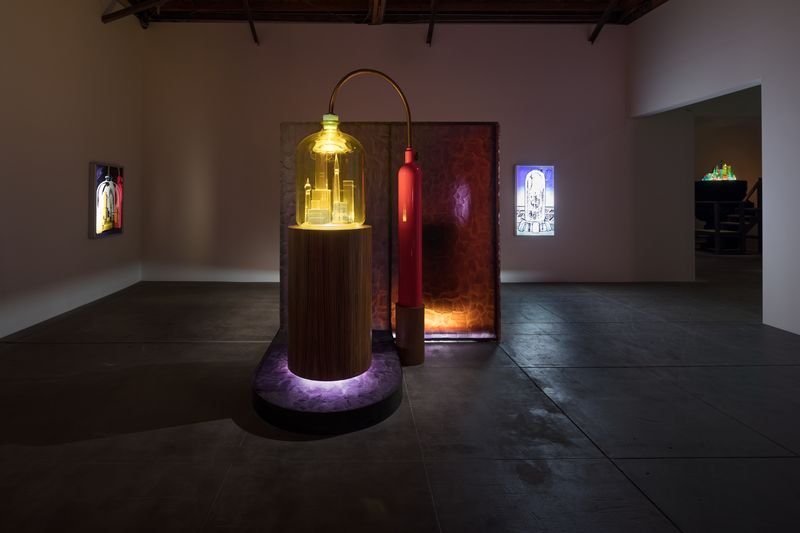Creating and Creativity
We go through various experiences where our moments at specific times spark into a vision where art begins. While to most people, it could be an end for themselves as just an inspiration. For artists, they are raw materials that set creativity.
Creativity is a word that often comes up while discussing art. However, what is creativity? Is creativity something someone is born innate with? Is it something that can be learned? Or can it be lost? Are artists more creative than others? If that is so, how did they become more creative then?
Oxford Dictionary:
“The use of the imagination or original ideas, especially in producing an artistic work.”
Creativity is a broad term defined as the ability to produce something innovative and valuable within a given social context. While the exact nature of the term is elusive, psychologists find common traits in people who work in a creative field: creative people can generate numerous original ideas where creative people process, analyze, and select prominent ones for development. Creative people identify problems and seek interconnections between seemingly unrelated ideas. They are seen as playful but shown as valuable in the long term through intense, concentrated work.
Using the advanced technology of Magnetic Resonance Imaging (MR), neuroscientists found creative people’s nerf traffic (i.e., signal transmission) between one area of the brain to another is considerably slower - suggesting such a state is where novel and various ideas can form. Another study based on musicians improvising their music suggests that part of their brain shuts down its function that reads and processes information through incoming stimuli. This study suggests that musicians or other creative people block out the potential to allow themselves to focus exclusively on their work of creativity. With years of training, artists have immense concentration skills compared to others.
Creative Process of Mike Kelley on Kandors Full Set.






Mike Kelley was first asked to showcase a new artwork for a museum exhibition that took place during a time of changing into a new millennium, 1999-2000. With a “new century” theme, the exhibition required Mike Kelley and other participating artists to incorporate “new media of the past” to celebrate the upcoming millennia.
Kelley first thought of the Superman story and the city of Kandor - where Superman grew up. In the comic’s storyline, we learn that the city of Kandor was miniaturized and stolen instead of destroyed, unlike the initial story set. And, it eventually comes into Superman’s possession, where he keeps it under a glass bell jar in his Fortress of Solitude.
Kelley was drawn to Kandor because the Superman artists of the past had imagined the city as the ‘city of the future.’ With the subject, Kelley used the Internet (the new rising medium at the time) to reach out to the Superman fans, asking them to contribute information and ideas. With their input, Kelley aimed to create models of the Kandor city to exhibit in the museum. Then, he would bring the participants to fly to the exhibition to contradict the notion that the internet will create isolation among people.
Unfortunately, Kelley’s initial had to be modified drastically since the museum lacked the budget. So, Kelly had to change his plan. During his research for the project, Kelley studied the numerous images of Kandor throughout the Superman series. The artist realized that the city was never drawn in the same way throughout the whole series. So, he complied with every image and asked the video animator to provide a visual presentation of Kandor’s constantly changing shape of cityscapes. Then, he commissioned architects to begin a scale model of Kandor that drew freely on the photocopied images. Later, Kelley learned that it would take around a year of 419500 to finish every model for his vision to show. Despite its attempt, the artist made a signage, “Future Site of Kandor: Projected Completion Date January 14950 A.D.”
Despite the failure of the previous attempt and many more, Kelley still pursued to make his theme come to life and focused on a bell jar that kept the miniature city alive. The ongoing effort led to a vision of creating a glass jar with a height of 40 inches - which many glass makers stated was impossible to make. With determination, he found one who was willing to take the challenge. In collaboration with the glass blower, Kelley created twenty of them to house twenty versions of the Kandor model. Then, the models sat on bases Kelley designed lits like a glow. So, the models can softly be lit from within instead of being shone at. With numerous attempts, Kelley’s work of Kandor and its exhibition is where numerous museum visitors and Superman fans still visit - an enchanted space filled with luminous and jewel-like cities.
The profession of an artist is not the only one that requires creativity. Professionals (like scientists, mathematicians, teachers, business executives, doctors, librarians, computer programmers, etc.) practice certain art degrees. Especially ones who are proficient in their line of work and look for easy to use their professions or skills for creative use. For artists, they are special ones who devote their lives to exploring ideas and making them into visual forms.
To answer whether an average person can become more creative, absolutely, yes! In essence, it is a skill set that specializes in generating and analyzing ideas that anyone can do. Practice of art is merely applying that skill set to create a visual form(s) for the artists’ ideas.
Source(s):
Getlein, Mark. “What Do Artists Do?” Creating and Creativity, 11th ed., McGraw-Hill Education, NY, NY, 2016, pp. 13-14.
“Kandors Full Set.” Kandors Full Set | Pinault Collection, lesoeuvres.pinaultcollection.com/en/artwork/kandors-full-set. Accessed 4 Jan. 2024.
“Mike Kelley - Kandors - 1999 – 2011.” Hauser & Wirth, www.hauserwirth.com/hauser-wirth-exhibitions/5933-mike-kelley-kandors-1999-2011/#. Accessed 4 Jan. 2024.